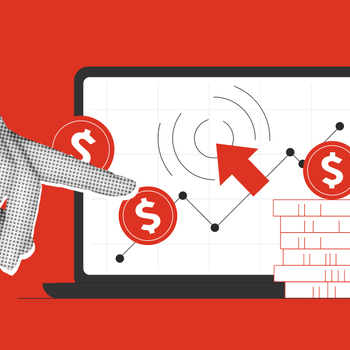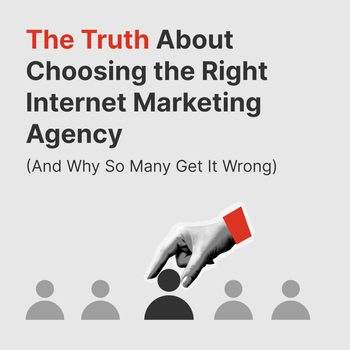What is Brand Awareness and How to Put Your Brand on the Map
by Saunder Schroeder • February 8, 2022
By Saunder Schroeder
Influencer Marketing Hub 2021 showed brand awareness to be the top priority of social marketers. Why is that? Considering the cut-throat competition in the online space, it’s reasonable why marketers want to increase brand awareness and visibility.
Many companies compete for the same pool of customers, but only a few get to claim them. It’s no wonder brand awareness is prioritized by marketers.
But, what is brand awareness exactly? How does it help your business? In this guide, you’ll learn the answer to these questions. Plus, we discuss the process behind a brand awareness strategy and how to make your awareness campaign a success.

Brand Awareness: What Is It?
Brand awareness refers to the level of knowledge customers have about your brand. If you want to increase awareness of your brand, you’ll need to market your name in front of people.
When most customers know what you offer, you’ve developed brand awareness. But if most of your customers have minimal knowledge about you, you need a brand awareness strategy to bridge the gap.
Brand awareness should not be confused with brand recognition, which refers to how easily your target audience can recognize your brand. For instance, McDonald’s big yellow ‘M’ is the key tool for the company’s recognition.
Brand recognition has a lot to do with the company’s visual identity, such as symbols, colors, and logos. Essentially, it’s a type of brand awareness.
On the other hand, brand awareness encompasses a company’s unique value proposition, reputation, and culture. It makes your target audience recall general impressions and emotions about a company.
Brand awareness isn’t limited to companies selling physical products — it’s also big for service providers. In essence, any business with an identity can benefit from brand awareness.
The 5 Types of Brand Awareness
What is brand awareness in marketing? To fully understand this, businesses need to be familiar with the types of brand awareness.
Brand Recall
Brand recall is an important tool for both physical and service-based companies. It refers to your target audience’s ability to recall your company name, logo, symbol, tagline, and more.
When people can identify your brand from memory, you have successfully built up its recall among customers.
You can do that by defining your brand’s unique selling proposition or distinguishing yourself in your niche by creating offers that none of your competitors can match.
Brand recall, quite simply, is a measure of your customer’s ability to remember your brand’s name when prompted with anything associated with it. For instance, if you have a question in your mind, Google instantly comes to mind.
Likewise, if you want to purchase something, you’ll think of Amazon as your first place to shop. These companies have built brand recall over the years because of their remarkable service and usefulness to customers.
Brand Recognition or Unaided Brand Awareness
Unaided brand awareness refers to how well your target audience can recognize your brand without any cue or prompt.
It’s about people spontaneously thinking of your business whenever they want to purchase a related product/service.
It ties in with brand recognition since its main objective is to help your customers identify you, even without a prompt. For some marketers, brand recognition isn’t as important as it is for others who use logos and symbols to build their brand identity.
A strong brand recognition indicates that your customers have been able to create a strong association between your company and a certain industry, product, or niche.
Visual Branding
Visual branding comprises design elements, such as fonts, shapes, materials, functionality, and color. With successful visual branding, you can create a memorable experience for your customers, prompting them to think of your brand whenever they see that particular design element.
Apple’s logo of a bitten apple is the perfect example of this. The moment you see the logo, the company comes to mind.
Top of Mind
Top of mind awareness means a company’s product is the first to come to consumers’ minds when they think of a certain category or industry. For instance, when someone has to buy a mobile phone, the first two brands that may come to mind are Apple and Samsung.
Likewise, Nike and Adidas have top of mind brand awareness when it comes to sports shoes and apparel.
Brand Dominance and How Do You Get There?
Brand dominance means that customers identify your brand as superior to others. They build such a strong emotional connection with your brand that they become advocates for your company and refer it to their friends and family.
As a marketer, you must drive home the idea of how your product/service is better than everything else in the market, driving consumer satisfaction and loyalty. To achieve this, you need to know precisely who your target customers are and how their needs match with what you offer.
Once you’ve figured that, here are some tips that can help you accomplish brand dominance:
- Give constant reminders to your customers of what your brand has done for them.
- Make your taglines catchy (and true) so that they’re easy to remember.
- Avoid attaching any negativity to your brand.
- Include social proof to strengthen the authenticity of how much customers love using your product/service.
- Make a habit of delivering exceptional customer service throughout the lifecycle of a customer’s association with your brand.
- Focus on building emotional connections with consumers by offering them unique, personalized engagements.
- Keep your content fresh and engaging so that it’s easy for customers to remember.
How to Generate Awareness for Your Brand?
Now that you know the brand awareness definition, it’s time to learn how to put this concept to use.
Getting Started With Content Marketing
Content marketing includes the use of engaging and shareable content such as blog posts and videos to promote your brand. Content marketing is a highly effective way of attracting traffic to your website.
82% of marketers actively used content marketing in 2021. It’s understandable why content marketing is of utmost importance since 47% of customers review three to five content pieces before engaging with a sales representative.
When getting started with content marketing, take the following steps:
- Understand Your Customers: Who is your target audience? What kind of content are they more likely to read? Do they prefer blog posts or video content? Knowing all of this will help you deliver the best and most engaging content to your customers.
- Define Your Brand: Use your content to bring out the best in your brand. What does your brand stand for? How do you plan to make a difference? Defining these aspects will help you get started with content marketing.
- Create A Content Marketing Plan: Formulate an editorial calendar detailing where and when you’ll publish new content on social media, your blog, or through guest blogging. Likewise, schedule engaging content that you’ll publish on social media.
- Re-adjust Your Strategy: Depending on the performance of your content, make changes to it (e.g. tone of voice). The point of marketing is to test and measure your progress to improve your strategies based on actual data.

Word of Mouth Marketing: Does It Work?
Word of mouth marketing encompasses strategies designed to make people talk about your brand. It is often known as WOM (word of mouth) marketing, a strategy that taps into the power of advocates who recommend products they’re passionate about to their network.
Word of mouth is powerful because one person’s influence can reach up to 10 others. If customers are happy with your product or service, they’ll share it with their friends and family.
These new leads are more likely to believe the people they know rather than a brand claiming to be the best.
That’s precisely why word of mouth marketing does such a great job at bringing new customers to a business.
WOM marketing is so effective that it accounts for 13% of global sales and brings in $6 trillion in global spending annually. In fact, 64% of marketers believe word of mouth marketing to be the most effective type of marketing.

Awareness Campaigns and How to Use Them to Your Advantage
Brand awareness campaigns are designed to promote a brand so that people will remember it. You can use these campaigns to familiarize consumers with a new product you’re launching or an initiative you’ve taken on.
Businesses can use brand awareness campaigns to:
- Build Hype: A brand awareness campaign is a perfect way to build hype and anticipation for a product or service. For instance, Coke’s #ShareACoke hashtag did a great job at keeping the brand in the limelight.
- Introduce a New Product: If you’re launching a new product, use social media campaigns and email marketing campaigns to introduce it to your target audience.
- Create A Buzz Around Your Brand: Highlight the things that make your brand special such as unique design, quality products, and more. Make your target audience care about what you do by creating a buzz online.
Influencer Marketing: Is This a Viable Way to Generate Awareness?
Influencer marketing is growing increasingly popular because people are known to trust the recommendations of others. People tend to believe what influencers say, especially if they share similar interests with them.
17% of companies spend more than 50% of their marketing budget on influencer marketing. With the rise of TikTok and Instagram influencer marketing, this approach is viable for businesses that want to remain relevant in the public’s eye.
How Can Brand Awareness Help You Gain Loyal Customers?
Since brand awareness etches your brand into the customers’ minds, it helps build loyalty. Plus, it ensures the long-term affiliation of the customer with your brand.
Creates an Emotional Connection With Your Customers
Brand awareness helps build an emotional connection between your brand and your customers. When you come up with creative ways to highlight the benefits of using your product or service, your audience begins to trust it more.
Disney is a good example of this. Despite the many concerning claims about the company, Disney movies still do well, considering the company’s revenue development surpassed $69 billion in 2020. That’s because the audience has an emotional and nostalgic connection with the media house’s productions, and Disney uses this to its advantage.
Creates Trust With Your Customer
Strong brand awareness is also helpful in cultivating trust in the consumers’ minds. When people trust that they can get the best quality, fast shipping, or excellent customer support from a company, their trust in the brand strengthens.

Generates Referrals From Other Loyal Customers
Depending on how strong a brand’s awareness is, customers may also recommend its product or service to their peers, bringing in more customers for the business.
Customer advocacy helps a brand grow since consumers are more likely to be in touch with your target audience. Plus, it’s easier to believe a customer than a company itself.
How to Know if Your Awareness Efforts Are Working?
If you want to measure the success of your awareness campaign or brand awareness strategy, you can use the following metrics.
Social Media Posts Insights: What Do These Tell You?
Social media posts insights, such as likes, shares, comments, and saves, tell you how your target audience is engaging with your content. If the engagement is high, it correlates to higher brand awareness.
It also means your content is hitting the right notes with your audience, so you can keep creating content that builds strong brand identity.
Website Traffic: Is It Changing?
Website traffic is another indicator of your brand awareness campaign’s performance. If you’re getting more visits than usual, it’s a sign your efforts are fruitful. It’s also helpful to check which channel you’re getting the traffic from.
Are people coming from the link in your social media accounts’ bio? Is it an organic search? Knowing this will help you polish your brand awareness strategy even more.
Branded Search Volume
Brand search volume refers to the number of searches that come up with your brand name. It’s another way to measure the success of your awareness campaign, especially if you’re using it as a keyword on Google Ads.
A higher brand search volume means your marketing efforts are working and the brand awareness is high.
Why Is Brand Awareness Important?
Brand awareness holds great importance for a brand since it ensures your customer base can easily recall your product or service. It also helps build trust among consumers and encourages them to share their experiences with others.
If you’re having a hard time boosting customer engagement and acing digital marketing, Disruptive Advertising can be of great help. With a team of highly expert digital marketers, Disruptive Advertising helps put your brand in front of the right audience through personalized brand awareness campaigns.





